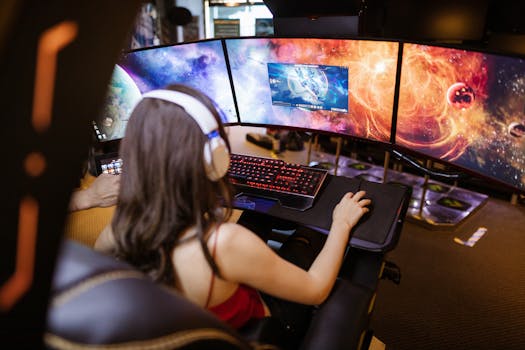Multi Monitor Setup: Productivity vs Gaming, Which Should You Build?
9/24/2025 · Monitors · 7 min

TL;DR
- On a budget, two matched 24 inch 1080p monitors are the easiest path to more screen real estate for productivity and casual gaming.
- For mixed use pick one 27 inch 1440p main monitor plus a 24 inch 1080p secondary if you want sharper main workspace without breaking the bank.
- For pure gaming a single high refresh monitor is usually better than three low refresh displays. If you want surround gaming, prioritize matching refresh and response.
Why multiple monitors
- Extra monitors increase visible workspace and reduce app switching.
- They improve multitasking for editors, developers, traders, and designers.
- For gaming they can boost immersion but add GPU load and possible bezel disruption.
Resolution and alignment
- For best visual consistency match resolution and pixel density. Mixed PPI can make windows look different in size.
- Common pairings:
- Two 24 inch 1080p for consistent text size and easy GPU requirements.
- 27 inch 1440p main plus 24 inch 1080p secondary for a sharp primary screen and cheaper secondary.
- Dual 27 inch 1440p for a premium workspace but requires a stronger GPU.
Size, bezels and viewing distance
- 24 inch fits small desks and keeps everything in view without moving your head much.
- 27 inch is great for a main monitor but needs more desk depth.
- Thin bezels reduce visual interruption when putting monitors side by side. Flat vs curved depends on preference and desk width.
Refresh rate and response
- For productivity 60 to 75 Hz is fine.
- For gaming aim for 120 Hz or higher on the primary display. If you game across multiple monitors, ensure matched refresh or use the highest refresh for the main game display.
- Adaptive sync helps reduce tearing when frame rates vary.
Panel types and color
- IPS gives best colors and viewing angles for content work.
- VA offers higher contrast for darker rooms but can have slower pixel response.
- TN is less common now but can still serve when low cost and high speed are required.
- If you do color critical work, calibrate all monitors or buy closely matched panels.
GPU and connectivity
- Driving multiple displays increases GPU load especially at higher resolutions. A midrange GPU can handle two 1080p displays easily, but multiple 1440p panels will need more power.
- Check ports: DisplayPort is best for high refresh and multi monitor daisy chaining if supported. HDMI can work but check version limits.
Mounting and ergonomics
- Use a monitor arm or dual stand to save desk space and align heights and angles precisely.
- VESA compatibility is useful for arms and stands.
- Ensure cable routing and a power strip with spare outlets are planned.
Layout tips for productivity
- Place the primary monitor directly in front and secondaries to the side, angled slightly inward.
- Use one vertical monitor for long documents or chat windows if you read a lot of text.
- Organize apps by task, for example code on one screen and documentation on another.
Layout tips for gaming
- Use a central high refresh monitor for gaming and move secondary information like chat, voice apps, and guides to side screens.
- For ultrawide or multi monitor racing simulators, consider bezel width and GPU scaling capability.
Buying checklist
- Match resolution and PPI when possible.
- Decide if you need matched refresh rates.
- Check GPU outputs and cable versions.
- Choose VESA compatible stands or arms.
- Prioritize IPS panels for color accuracy if you do creative work.
- Measure desk depth and width before buying.
Bottom line
Multiple monitors boost productivity more than raw refresh rate, but for gaming a single high refresh monitor often yields the most noticeable improvement. Aim to match resolution and panel type for the cleanest experience and plan mounting and ports before you buy.
Found this helpful? Check our curated picks on the home page.